The effects of too much salt hit harder for some than for others. Here’s how dangerous this sodium sensitivity can be and how new institutional standards can help.
Key Takeaways:
- Sodium sensitivity amplifies the already dangerous consequences of excessive salt intake
- Some gender, medical, and racial groups may be more likely to develop this condition
- Sodium sensitivity can be investigated through diet-based medical tests
- Manufacturers can help sodium sensitive individuals better manage their condition by reducing the amount of sodium added in the production process
Excess sodium is a major health issue for millions of people. It can directly contribute to heart disease, which is responsible for 32% of all deaths globally each year. Heart disease can manifest as strokes, heart attacks, and hypertension, all of which can be fatal.
The World Health Organization (WHO) recently started tackling the problem of too much salt in our diets. WHO set recommended sodium contents for various foods with the aim of lowering global daily sodium intake by 30%. These new institutional standards represent a crucial step in the battle for better health.
People with sodium sensitivity will particularly benefit from these initiatives. This guide will explore this condition, offer some ways to manage it, and explore how manufacturers can reduce harmful levels of sodium in their snacks.
What is sodium sensitivity?
Sodium sensitivity is measured by how significantly a person’s blood pressure is impacted by a high-sodium diet. Some people have a very high resistance to hypertension caused by salt intake and are classified as salt insensitive or salt resistant. Others may see their blood pressure spike by between 5% and 10% when consuming excessive salt, which could mark them as sodium sensitive.
Sodium sensitivity is primarily rooted in how effectively the kidneys and vascular smooth muscle cells can maintain safe and steady sodium levels. This delicate balance is harder to preserve when too much salt is consumed and healthy levels of fluid retention and excretion are compromised.
Other factors, including age, also contribute to how sensitive a person is to sodium, since sodium sensitivity is more likely to occur in older people. Early studies show that those in African, Afro-Caribbean, and Asian populations may also be susceptible to this condition, although gene-based correlations are under further medical study.
Gender is a more clearly isolated factor, with salt sensitivity being clinically higher in women than in men, according to several international studies. Pre-existing medical conditions such as diabetes may also contribute to increased likelihood of sodium sensitivity. Anyone – particularly those belonging to perceived high-risk groups – could gain valuable insight into their current and future health by visiting their doctor to learn more.
How is sodium sensitivity measured?
Physicians suspecting their patient is suffering from sodium sensitivity may choose to put them on a reduced-sodium diet for a predetermined number of days, followed by a higher-sodium diet for the same length of time. The Food and Drug Administration (FDA) generally classifies a reduced-sodium diet as 5% or lower of daily sodium value per serving and high sodium as 20% or more.
Blood pressure is then measured during both periods, with any increased readings noted at the end of the second stage. A years-long dietary study noted by the American Heart Association suggests that “sodium sensitivity is a cause, not a consequence, of high blood pressure” and that sodium sensitive people are 43% more likely to develop hypertension as a result of excessive salt intake.
Sodium sensitivity is a serious issue requiring immediate and sustained dietary changes. Failure to shift to a lower-sodium lifestyle increases the risk of worsening hypertension and its related health problems while putting added pressure on kidney function. Our previous blog on the negative health effects of excess sodium goes into greater detail on how it may also result in blindness, osteoporosis, and dementia.
How to minimize the risks of salt sensitivity
Your doctor’s advice should be followed above all else. This advice can be supplemented with some general steps that may be recommended for sodium sensitive patients. An excellent habit to develop is scrutinizing labels for all forms of sodium, noting how much is present in each product.
Substituting harmful foods with other flavorful reduced-sodium snacks like nuts, seaweed, and our own widely available SaltMe®! Chips is another deliciously simple step.
Food producers should also step up to take responsibility for their role in contributing to the hazardous amounts of sodium they put into their products.
Salt-sensitive customers are another pressing reason for snack manufacturers to follow the institutional standards being set by WHO and in the FDA’s Guidance for Industry. Helping all consumers reduce their sodium intake while following healthy dietary guidelines is the best solution for everyone.
MicroSalt® can help manufacturers make a difference
Processed, packaged, and prepared foods provide more than 70% of the sodium present in the American diet. What an incredible social change producers of those foods could make if they cut the amount of salt in their production process!
This is possible by adding MicroSalt® to the mix – a revolutionary, all-natural development in healthier sodium that won’t boost operating expenses or alienate customers through bland-tasting food. It’s how we’re making our SaltMe®! Chips stand out from the crowd to deliver twice the salty taste with half the sodium content found in standard salt – all while helping the public get the amount of sodium they need to maintain nerve impulses, muscle function, and a healthy fluid balance.
It’s no longer enough for food manufacturers to provide for the public. We have to unite in protecting them. This is the philosophy that helped MicroSalt® beat global competition to win the P&G Alumni Network’s 2021 Star Entrepreneur Award, and we continue to forge new partnerships with food producers who want to adopt evolving institutional standards today for a healthier tomorrow.
Contact MicroSalt® today with any questions
Our diverse team is here to help you understand the principles and science behind our game-changing salt innovation and how it can make your product stand out in a health-conscious marketplace. Contact us on our message page or call 1 (877) 825-0655 to learn more.




